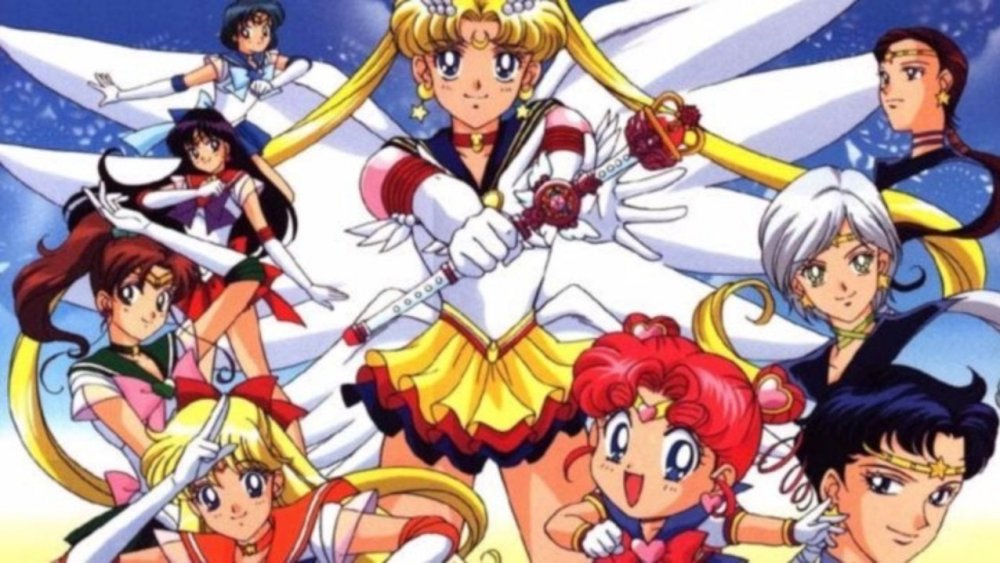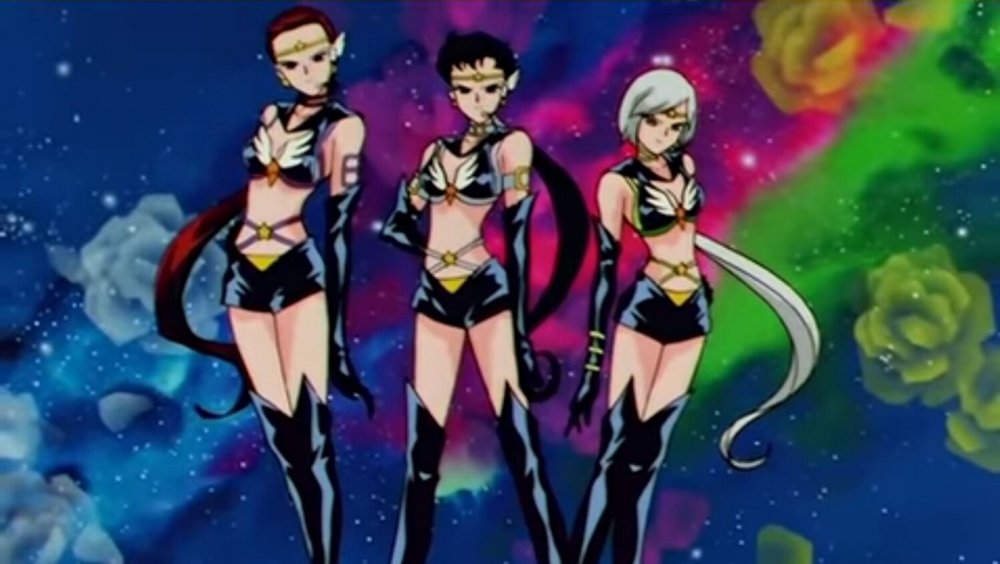The Sailor Moon Season You Never Got To See
It's hardly contentious to suggest Sailor Moon is one of the most popular anime series ever created, boasting fans not just from its native Japan, but all over the world. It's a perennial convention merchandise and cosplay favorite — so ubiquitous that even those only casually acquainted with anime as an art form will likely recognize the aesthetic of the Sailor Scouts, even if they can't name the characters. Between 1996 and 1997, the fifth and final season of the original Sailor Moon run aired in Japan. Entitled Sailor Moon: Sailor Stars, that season was the culmination of Usagi's destiny as the moon princess to save the galaxy and defeat Sailor Galaxia, the once-noble, ultimate Sailor Scout corrupted by the force of Chaos when she triumphed over it in eons past. The Star Seeds present in all life across the galaxy was being corrupted, creating Phages, pushing Usagi and her friends to unite with strange new allies to save humanity from the taint — all while she navigating the struggle of entering high school.
Despite the global appeal of Sailor Moon, this season never aired in North America as part of the original distribution by production company DIC Entertainment in the '90s. The only way most American fans could see Sailor Moon: Sailor Stars for a very long time was either by acquiring bootleg or import VHS from the still-nascent convention circuit, or, later, by illegally torrenting it with questionable subtitle translation.
That all changed at the end of 2019, when VIZ Media acquired the home video distribution license for the season and finally released Sailor Moon: Sailor Stars in two halves on Blu-ray. (The first episode of Sailor Stars was briefly streamed in 2015, along with the season finale of the fourth season, Sailor Moon SuperS.)
But if Sailor Moon is so popular, why was it such a struggle for so long to see it in the western hemisphere? Let's take a look.
A pall of rumored censorship over Sailor Stars
There are two schools of unconfirmed thought about why Sailor Moon: Sailor Stars never received a previous American localization. One: Toei Animation, the original license holder, allegedly named an astronomically high price for purchasing the rights. (Sailor Moon was indeed popular, and perhaps Toei thought it could name its price.) Two: No one in America would purchase it because of major content issues that couldn't be edited or written around for children's consumption. (There are a lot of things in Sailor Moon that only adults notice, after all.) Sailor Moon was subject to a fair amount of straight-washing censorship for the original American distribution in its previous seasons. The implied romance been Sailors Neptune and Uranus was shifted into a "kissing cousins" trope; Zoisite, one of Queen Beryl's flunkies, was voiced by a woman in the English localization despite being written as a male character purely to work around his on-screen relationship with fellow male villain Kunzite.
But Sailor Stars presented a much bigger challenge of gender identity that may have been considered too risqué for children of the '90s. The season introduces three characters called the Sailor Starlights: Seiya, Taiki, and Yaten. They are from an alien planet, searching for their long-lost princess. To find her, they travel as a band performing songs to lure her from hiding. The twist, however, is that when performing as a musical act, they are men in a boy band. When it's time to fight, they physically transform into women and become the Sailor Starlights. They also, well, wear a whole lot of strappy black leather, too. It's gay, it's leather, and it might have been a little too much for one or more DIC executives.
We'll never know for sure, but many a Sailor Moon fan have believed the theory and have written about it more than once. Either way, the rift is closed at last with the lavish box set release this iconic series deserves.

